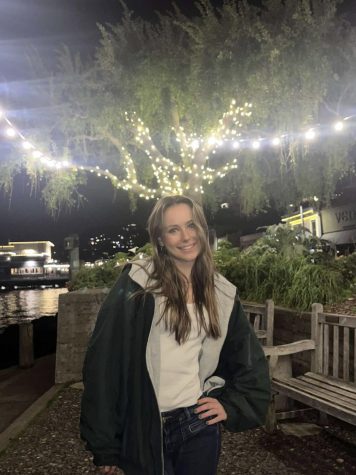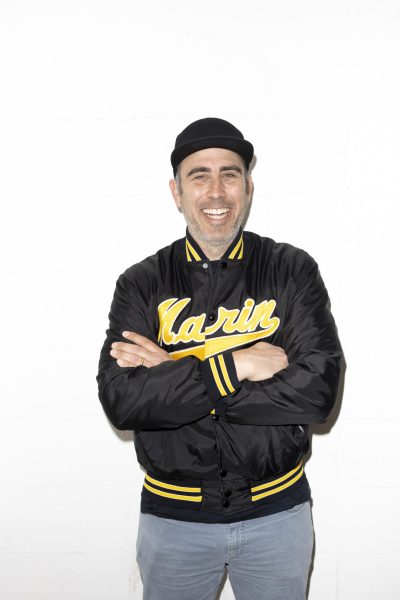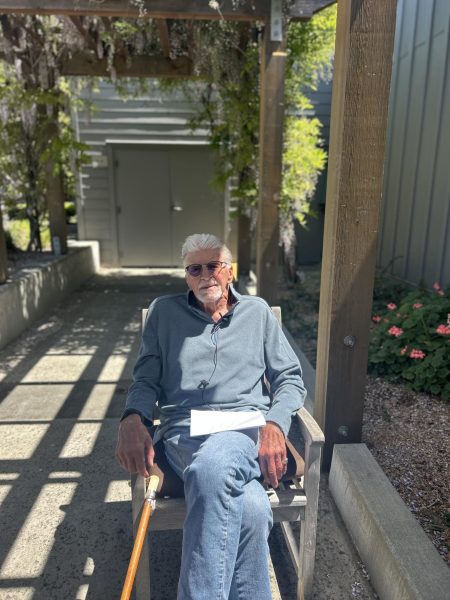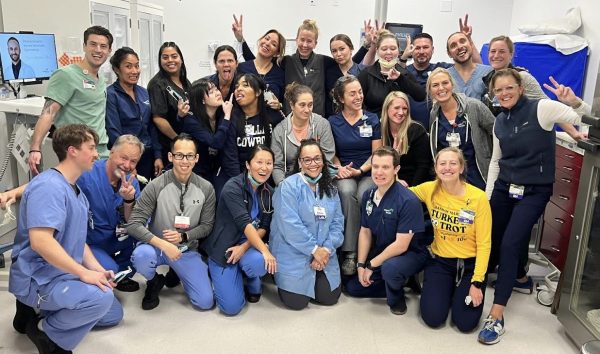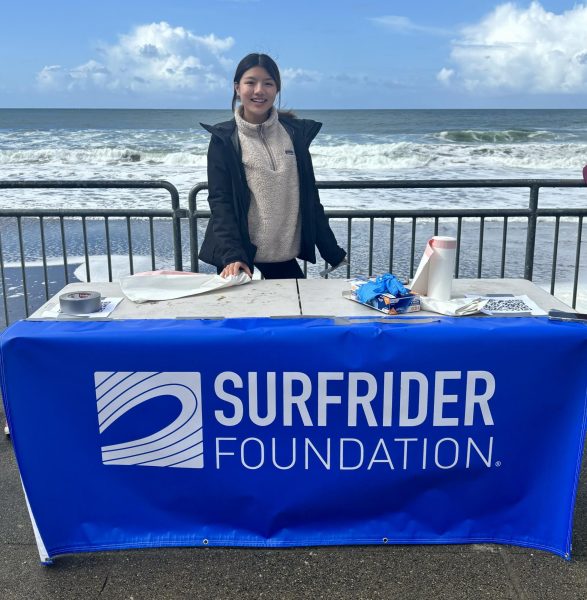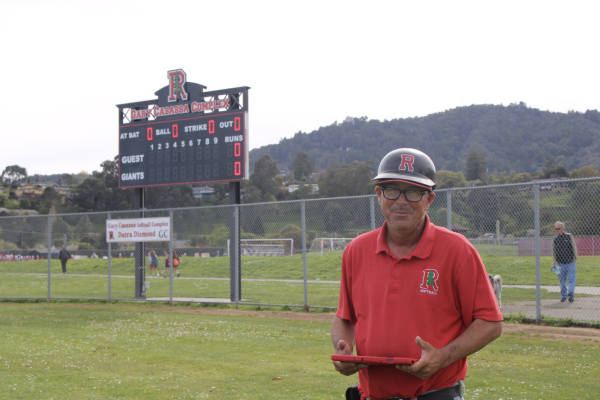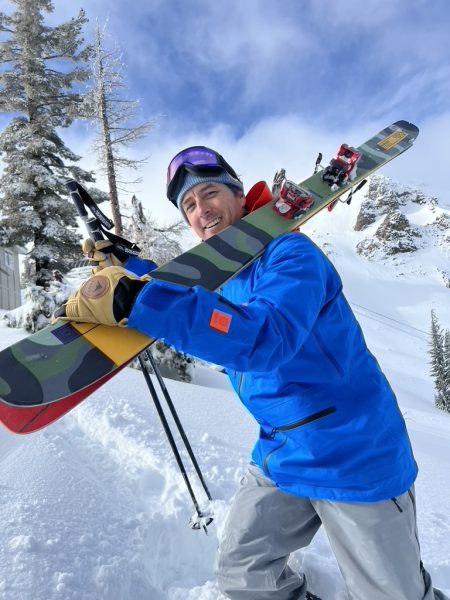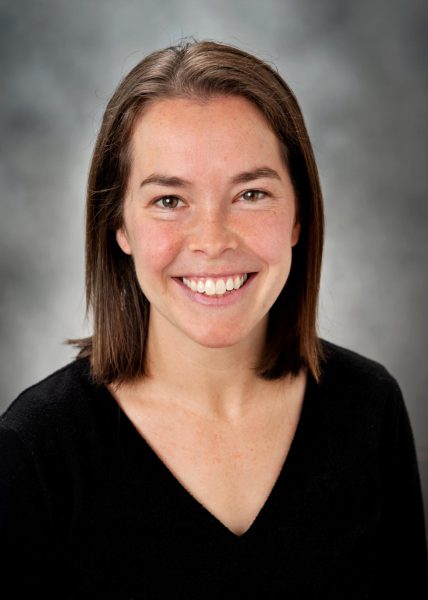Finding freedom through capoeira
February 10, 2023
With the graceful seesaw of a kick to counterattack, a pair of capoeiristas challenge one another with this Brazilian dynamic art form that infuses music, dance, martial arts, rhythm and spirituality. They challenge one another with an entrancing display of defensive and offensive techniques. The hoda, a circle of onlookers, fuels this fiery duel with encouragement by rhythmically singing and clapping.
Using capoeira, Lisa Willoughby, a Brazilian native and Redwood mom, propels inclusion and belonging into Marin. Lisa is the founder and president of the non-profit organization, ABADÁ-Capoeira Marin. She created the studio so aspiring capoeiristas can expand their skills using their body and minds to achieve self-improvement inside and outside practice.
“I wanted to be able to make a difference in the community by donating my time, mind and physicality towards a program that would help people. Capoeira was an instrument for that and the best instrument for me, a Brazilian here in the U.S., because I was able to be closer to my culture,” Lisa said.
“In marketing, it was a lot about manipulation of minds, people, life and ideas, and sometimes you wouldn’t sell what you believe in. I started questioning myself about how that was going to affect my life,” Lisa said.
She chose to fulfill her childhood interest and began pursuing capoeira training, with intention to teach.
“I decided to focus more on the social aspect. I have the ability to talk to different people, and I wanted to use that more to help communities,” Lisa said.
Robert Willoughby, Lisa’s husband and treasurer of their studio, supported Lisa in sharing her passion with the community.
“As an American, [Robert] had more of a voice. He also believed that Marin needed more diversity for real — not just talking about diversity,” Lisa said.
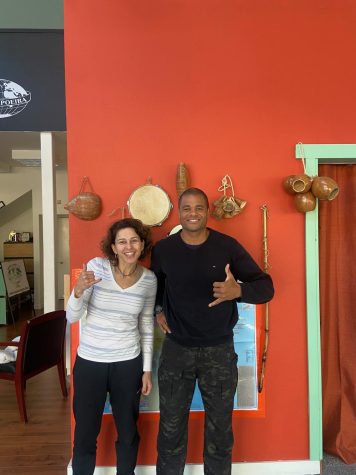
After teaching for two years, Lisa met her business partner, Diego Friestas. Friestas shared her vision to build inclusion through capoeira, and they joined forces in April 2022 to open a studio in San Anselmo.
“Our progress is inclusion — we accept everybody right here. … No matter where you’re from, everybody is the same in our studio,” Friestas said.
Friestas grew up in a Brazilian social project and learned the importance of a welcoming community. Being raised in these circumstances helped them further implement an embracing environment for everyone. During their capoeira training, they have learned this fundamental mindset of becoming equals.
“When the uniform is on, you’re a capoeirista. You’re not a doctor or a maid — you work on your own skills. It’s not just the physicality of it but also the community, art, culture and language that I think is much needed here in Marin,” Lisa said.
Lisa and Friestas’ intentions are correlated to capoeira’s origins. When Portugal first conquered Brazil, African slaves of more than 50 different dialects were separated from their families and intermixed with strangers on plantations.
“In capoeira, we speak Portuguese because they had to learn the language to figure out how to survive. … Today, capoeira is known as a dance, but [slaves] were actually practicing their training of different martial arts from Africa. They secretly trained takedowns, kicks and strikes,” Lisa said.
Capoeira became a training practice, camouflaged by musicality and dance. These infrequent moments of feeling a sense of freedom became an important part of enslaved peoples’ cultural identity. The plantations became a melting pot of heritages, and capoeira initiated camaraderie among African people of many different cultures.
“You can imagine life as a slave — so brutal and repressive. The only way for these people from many different tribes to communicate was this one time [where they were] allowed to dance and sing. Capoeira became both a community center and a training for freedom,” Robert said.
The roots of capoeira have translated into a modern morality of inclusion. Lisa has embraced cultural differences as a native Brazilian married to a white American. Hence, the Willoughbys and Friestas have exemplified this mentality of acceptance within the studio and support diversity.
“We’re not allowing any prejudice because capoeira came during the slavery period, so we won’t exclude [anyone]. We’ll work together because it’s microcosmic of what the world is,” Lisa said.
Finding purpose in life is something that Lisa and her team have been teaching to their training capoeiristas, students of all ages, genders and abilities.
“‘Why do we have capoeira nowadays?’ people ask. We’re not fighting anybody. … It’s for freedom. Mental freedom. In your soul, in your body,” Lisa said. “There’s nothing choreographed, and everything is self-expression. … There is no race, no difference in culture that explains what it is to feel freedom. But it’s feeling the security to be who you are, not just what society tells you.”

